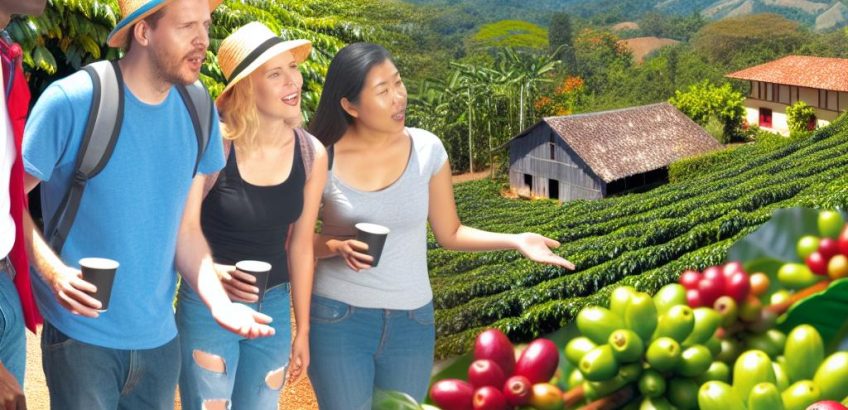
Coffee tours in Costa Rica
Introduction to Coffee Tours in Costa Rica
Costa Rica, renowned for its rich biodiversity and stunning landscapes, also holds a prominent place in the global coffee industry. The country’s volcanic soil, ideal climate, and commitment to sustainable farming practices make it one of the premium coffee producers in the world. Coffee tours have become a popular activity for travelers keen to explore the intricate processes behind one of the world’s most beloved beverages.
The Coffee Growing Regions
Costa Rica boasts several distinct coffee regions, each offering unique flavors and experiences. The Central Valley, known for its balanced and crisp flavors, and the Tarrazú region, renowned for its acidity and fruity notes, are among the most celebrated. Another important area is the West Valley, which produces coffees with a mix of bright acidity and smooth body. Each region provides a unique insight into the diverse coffee cultivation practices across the country.
Coffee Cultivation Techniques
Understanding the cultivation techniques is essential to getting to know the authentic flavors of Costa Rican coffee. Farmers in the Central Valley focus on growing coffee in environments that produce a notably harmonious and refreshing taste. Meanwhile, Tarrazú’s high altitudes allow the coffee cherries to mature slowly, leading to the development of more profound and often fruity flavors. In the West Valley, where the landscapes offer a slightly different climate, farmers aim to harness the soil’s nutrient-rich properties to yield coffee with bright acidity and a full, smooth body.
Understanding Coffee Production
Visitors on coffee tours can expect an in-depth look at the coffee production process. The journey starts from the plantation, where farmers explain the cultivation techniques, and progresses through to harvesting, processing, and roasting. Many tours highlight sustainable practices, showcasing how Costa Rican farmers incorporate environmentally-friendly methods to enhance crop quality.
The Harvesting Process
The harvesting of coffee cherries in Costa Rica is a meticulous process, generally done by hand-picking to ensure only the ripest cherries are selected. This manual technique reflects the commitment to maintaining the highest quality. The harvest season typically begins in November and extends through March, when visitors can witness this careful and labor-intensive practice firsthand.
Processing Techniques
Once the cherries are harvested, the beans undergo processing using the wet method, which is predominant in Costa Rica. This method involves pulping the cherries and fermenting the mucilage to reveal the beans inside. The fermented beans are then washed and dried before proceeding to the next stage. This method is favored for the cleaner, brighter cup qualities it imparts to the coffee.
Roasting Influences
Roasting plays a crucial role in drawing out the flavors developed throughout the cultivation and processing stages. Costa Rican roasters often aim for a medium roast to preserve the intrinsic flavors of the beans while also adding richness and depth to them. Observing the roasting process on a tour can be an enlightening experience, showing the transformation of green coffee beans into the aromatic coffee we enjoy daily.
Sustainable Practices on Coffee Farms
Costa Rica is a pioneer in sustainable coffee production. Many tours focus on the country’s efforts to maintain ecological balance. For instance, some farms use organic farming techniques, including composting and natural pest control, to minimize environmental impact. These efforts not only support biodiversity but also contribute to the quality of the coffee produced.
The Impact of Sustainable Farming
The impact of sustainable practices has been significant. Not only have these methods proven beneficial for preserving the environment, but they have also resulted in higher-quality coffee crops. The commitment to sustainability extends beyond cultivation to include comprehensive ecological management, such as water conservation and renewable energy use on coffee farms.
Coffee Certifications and Implications
Many Costa Rican coffee farms seek certifications like Rainforest Alliance or Fair Trade, recognized worldwide for promoting environmental and social sustainability. These certifications give consumers the assurance that the coffee they are enjoying was produced with responsible practices, further enhancing Costa Rica’s reputation as a leader in sustainable coffee production.
The Role of Coffee in Costa Rican Culture
Coffee plays an integral role in Costa Rican culture and economy. It is often referred to as the backbone of the country’s agricultural sector. Visitors will learn about the historical significance of coffee and how it shaped Costa Rica’s development. Sharing a cup of coffee is more than just a daily ritual in Costa Rican homes; it is a way to connect with others and share the country’s rich heritage.
Sharing and Enjoying Coffee
In Costa Rican homes, serving ‘café chorreado’ – a drip coffee made using a traditional coffee sock – remains a beloved household practice. This method not only produces a rich and aromatic cup of coffee but serves as a medium of hospitality. Gathering around for coffee embodies warmth and connection, and is a cherished part of family and social life.
Learn more about Costa Rican coffee tours and other travel experiences.
By embarking on a coffee tour in Costa Rica, visitors gain not only an appreciation for the complex processes involved in coffee production but also an understanding of the cultural importance of this staple crop in Costa Rican society. Each tour is an opportunity to taste freshly brewed coffee and purchase some to enjoy at home, ensuring the memories of this unique experience linger long after the journey ends. The understanding gained and the aromatic coffee tasted become reminders of the intricate history and sustainable practices embedded in Costa Rican coffee production, making such a tour an enriching addition to any travel itinerary.
